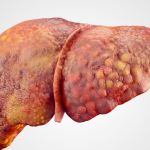Blue Light Specials: The Possible Effects of Short Wavelengths of Light on the Body’s Circadian Clock
Jacob Schor, ND, FABNO
“I do not say that John or Jonathan will realize all this; but such is the character of that morrow which mere lapse of time can never make to dawn. The light which puts out our eyes is darkness to us. Only that day dawns to which we are awake. There is more day to dawn. The sun is but a morning star.” – Henry David Thoreau, Walden
Teenagers inhabit a world apart from our own. For me, days are marked by the rising and setting of the sun. As the sun begins to rise, I awake, get hungry and eat breakfast as it does. I get hungry again when the sun reaches its zenith at noon and again when it sets. Shortly past sundown, I begin to look forward to bedtime.
My teenage daughter lives in a distant universe in a world that revolves around a faraway sun; her life is governed by environmental clues that are invisible to me. Perhaps she is attuned to electromagnetic signals emanating from her iPod or cell phone that tell her when to eat and sleep. She certainly doesn’t operate by any clock I can see.
Of course, my kid is no different in this from others her age. Most teens have lost track of time. As a result, they don’t get enough sleep.
Teen Sleep Habits
The U.S. National Sleep Foundation tells us that 25% of teens fall asleep in class at least once a week. Mary Carskadon from Brown Medical School reports that half of the teenagers tested show symptoms of narcolepsy. The National Highway Traffic Safety Administration tells us that sleepy teen drivers cause more than 50,000 traffic accidents a year (Carpenter, 2001).
For many years, scientists believed that teens needed less sleep than adults. It’s easy to see why.
Teens sleep less than younger kids; time spent asleep drops from an average of 10 hours a night during middle school to less than 7.5 hours by age 16. According to a 1998 study, 26% of high school students routinely sleep less than 6.5 hours on school nights (Wolfson and Carskadon, 1998).
Yet studies published over the last 20 years tell us that teens actually require more sleep to perform well than younger kids or adults do. The experts tell us that teens actually need 9.2 hours of sleep, compared with the 7.5 to 8 hours that adults need to perform at their best (Cohen, 1999).
There is a distinct shift in sleep habits during puberty. These kids start falling asleep later and later at night. There is probably a Darwinian benefit for teens to stay awake after their parents fall asleep; some increased chance of procreation that provides a survival advantage to our species. Their brains delay making melatonin until late at night. Current theory is that puberty causes an increased sensitivity to light so that even dim light suppresses melatonin.
Emerging Research
A new understanding of how light and darkness regulate the body’s circadian clock has risen over the last couple of years.
In the 1850s, Mueller identified the rods and cones in the retina of the eye as photoreceptors that produce vision. Since then it was assumed that these were the only light-sensing receptors in the eye. This doctrine collapsed in 2001 when a study was conducted at the University of Surrey.
Thapan and colleagues tested whether some wavelengths of light had more effect than others on suppressing melatonin. They exposed 22 test subjects to light with their eyes open in the middle of the night, when melatonin levels are highest. Melatonin production was clearly sensitive to light, and less was made as light intensity increased. Comparing the effect of different wavelengths of light, though, produced surprising results. The shortest wavelengths, what we see as dark blue, caused the biggest drop in melatonin.
The rods and the cones of the retina barely detect this wavelength of light. Thapan concluded that a third, still unknown type of photoreceptor, tells the brain when to start and stop making melatonin (Thapan et al., 2001).
The following year, David Berson of Brown University successfully isolated these new photoreceptors, a type of retinal ganglion cell. These cells extend long projections into the suprachiasmatic nucleus (SCN) in the brain and transmit information directly from the eyes. This is the region of the brain that regulates the circadian clock (Westphal, 2002; Berson, 2003).
This is a big thing. Up to this point, eyes were only for seeing. It now seems that there are two completely separate light-sensitive systems operating in our eyes. One uses rods and cones and allows us to see things; the second, using Berson’s ganglia, tells us what time of day it is.
In 2003, Lockley et al. confirmed Thapan’s findings. He again showed that shorter wavelength light has a greater effect on melatonin levels, but also that exposure to 460nm monochromatic light caused a significantly greater suppression of melatonin compared with 555nm monochromatic light (Lockley et al., 2003).
In 2005 Christian Cajochen and his group in Basel, Switzerland successfully reset the circadian clocks of test subjects using colored lights. Nine male volunteers spent an evening and night in a room in which Cajochen’s group of researchers controlled the lights. Under constant posture conditions, the volunteers experienced a controlled, lying down episode of 1.5 h under 2 lux (polychromatic white light), followed by a 2-h dark adaptation episode under complete darkness (zero lux). After that, light exposure was initiated for the next 2 h. During this 2-h episode, the volunteers received either indigo-blue light at 460 nm, green-yellow light at 550 nm, or no light. After this, the volunteers remained awake for another 1.5-h episode under 2 lux before they were allowed to sleep for 7.75 h. Throughout the experiment the researchers monitored each volunteer’s daily sleep-wake cycle.
During the two-hour period in total darkness volunteers displayed normal nighttime trends, including reduced core-body temperatures, slower heart rates, elevated melatonin concentrations in saliva and increased sleepiness.
The researchers reported in the March 2005 issue of the Journal of Clinical Endocrinology & Metabolism that exposing the subjects to blue light suppressed those changes, while green-yellow light had a minimal effect (Cajochen et al., 2005).
I think of this as I walk the dog at night and see all the house windows glowing blue from people watching their television sets. How much of our ability to watch late-night TV is connected with those blue screens?
About 5% of blind people who lack rods and cones in their eyes still have functional, blue light-sensitive ganglia so their brains can sense the light needed to set the body’s clock. Experiments on two profoundly blind subjects appeared in a 2007 issue of Current Biology. By shining a light into their eyes, the researchers were able to delay the subjects’ body clock cycle, proving that their ganglion cells still registered light. Light caused melatonin to drop by 60%. At the same time, alertness sharpened and brain activity increased, demonstrating that the body clock had been fooled into thinking it was daytime (Coghlan, 2007; Zaidi et al., 2007).
Research Application
This is useful knowledge. Ever since Edison invented the light bulb, we have inadvertently been offsetting our internal clocks by using artificial lighting. Controlling which wavelengths of light reach the eye gives us a way to reset and control our internal clocks. It has also opened the possibility of simple treatments for some unexpected conditions. Some of the potential applications of this knowledge are obvious. Strengthening the circadian rhythm should help with insomnia. Because of the association between low melatonin levels and increased cancer risk, there are some clear possibilities: Avoiding suppression of melatonin by adjusting nighttime light frequencies to avoid the short blue wavelengths could lower risk of certain cancers. Increasing melatonin levels by blocking blue light may prevent cancer development or slow cancer progression.
Some applications are less obvious.
Teenagers and their peculiar sleep habits were one of the first applications I read about. If we need light in the morning and darkness in the evening to set our circadian clocks, then kids don’t stand a chance. My daughter goes straight to school minutes after waking so early in the morning that much of the year it is still dark. She may not see natural sunlight until late in the day, if at all. A well-lit classroom is illuminated at about 400lux; compare that to the 10,000lux experienced outdoors on a dull, rainy day or the 100,000lux experienced on a bright day (Vince, 2006). Is it any wonder the kid is clueless as to when to go to sleep?
Those 480nm wavelengths of light that the retinal ganglia are sensitive to are the pretty color of the sky on a bright, sunny day. This knowledge has triggered some interesting attempts to reset circadian rhythms.
I’m tempted this school year, especially as it gets dark earlier, to follow the suggestions of Mariana Figueiro at the Lighting Research Center at Rensselaer Polytechnic Institute in New York. She proposed using orange-tinted glasses and light boxes as therapy for tired teens. Her idea is to expose the kids to the bright blue lights in the morning, then to have them wear special tinted glasses in the evening. These glasses have orange-colored lenses and are designed to filter out blue light, fooling the brain into thinking it is dark. She does not have the funding to adequately test this idea yet, but it sounds easy enough (personal communication, 2008).
In March 2008, Figueiro came up with another interesting idea. She proposed that gas stations and truck stops purposely use blue lighting to wake up drivers and reduce highway accidents. She suggests that truckers take 30-minute “light baths” during the night to keep alert while driving. She is currently testing whether illuminating the interiors of truck cabs with blue LED lights is feasible (New Scientist, 2008; Figueiro, 2008).
Of course, a lower-tech approach is simply to expose people to bright light in the morning. Adjusting school day schedules to begin after the sun rises would be the simplest solution. Some researchers simply have people sit outside in the sun. Others have used light boxes. Light boxes and even alarm clocks that activate lights have been designed that wake people with bright blue light of the exact frequencies the eyes and brain are most sensitive to.
Certain types of dementia, including Alzheimer’s, destroy neurons in the SCN. As a result, the internal clock for Alzheimer’s patients may be off by hours, leaving them awake at the wrong times.
Thinking that this might be a sort of “use it or lose it” scenario, a Dutch researcher tried stimulating the deteriorating brains of senile rats with light. Eus van Someren from the Netherlands Institute for Brain Research in Amsterdam exposed old rats that had SCN cell deterioration and sleep disturbances to bright light and found their sleep patterns became healthy and the SCN neurons were reactivated (Lucassen et al., 1998). A number of studies have been done with residents of nursing homes, some with Alzheimer’s disease. Just a few weeks of morning light exposure is enough to make a difference.
The most intriguing paper I have come across so far using these blue light-filtering glasses is on bipolar disorder. James Phelps, in a recent issue of Medical Hypotheses, combined this knowledge of the retinal ganglia and blue light with what is called “dark therapy” for treating bipolar disorder.
Over the last ten years, a series of papers have been published suggesting that “Fostering sleep and stabilizing its timing by scheduling regular nightly periods of enforced bed rest in the dark may help to prevent mania and rapid cycling in bipolar patients.” In simpler words, locking someone in a dark bedroom might help them calm down. The trouble, of course, is how do you force a person who isn’t locked up in a hospital to have “… extended bed rest and darkness” even if it does “… stabilize mood swings in rapid cycling bipolar patients”?
Getting patients to live in dark rooms is difficult outside of an inpatient setting. Phelps theorizes that a similar effect to “dark therapy” can be achieved simply by getting patients to wear amber-tinted glasses that filter out blue light. He reports success with several patients.
If filtering out blue light is useful for treating bipolar disorder, a troubling question quickly arises. Could our increased evening exposure to blue light emanating from fluorescent lighting, televisions and computer screens account for the high incidence of bipolar disorders in adults and especially in children? Or, along the same lines, how much does our outdoor street lighting contribute to this illness?
Israeli scientists used NASA satellite photos to rank towns in their country by outdoor brightness (Kloog et al., 2008). They were able to statistically associate the brightness of the light at night in different towns with breast cancer risk. Women living in the brightest lit towns had a 50% increased risk of getting breast cancer compared to women living in the least lit towns. This study alone should make us question the wisdom of switching to LED and fluorescent lighting, which emit more blue light than incandescent. What we save in electricity may be spent many times over in treating the resultant increase in morbidity.
 Jacob Schor, ND, FABNO is a 1991 graduate of the National College of Naturopathic Medicine and has practiced in Denver for the past 14 years. He served as president of the Colorado Association of Naturopathic Physicians (CANP) from 1992 to 2000, and continues to serve as legislative chair for the organization. He is in practice with his wife, Rena Bloom, ND, also a former CANP president, at the Denver Naturopathic Clinic.
Jacob Schor, ND, FABNO is a 1991 graduate of the National College of Naturopathic Medicine and has practiced in Denver for the past 14 years. He served as president of the Colorado Association of Naturopathic Physicians (CANP) from 1992 to 2000, and continues to serve as legislative chair for the organization. He is in practice with his wife, Rena Bloom, ND, also a former CANP president, at the Denver Naturopathic Clinic.
References
Carpenter S: Sleep deprivation may be undermining teen health, Monitor On Psychology Oct; 32(9), 2001.
Wolfson AR and Carskadon MA. Sleep schedules and daytime functioning in adolescents, Child Dev 69:875-887, 1998.
Cohen GJ (ed): American Academy of Pediatrics Guide to Your Child’s Sleep. New York, 1999, Villard Books.
Thapan K et al: An action spectrum for melatonin suppression: evidence for a novel non-rod, non-cone photoreceptor system in humans, J Physiol Aug 15;535(Pt 1):261-7, 2001.
Westphal SP: Make light of jet lag, New Scientist Feb 16; 2330:17, 2002.
Berson DM: Strange vision: ganglion cells as circadian photoreceptors, Trends Neurosci Jun;26(6):314-20, 2003.
Brown RL and Robinson PR: Melanopsin-shedding light on the elusive circadian photopigment, Chronobiol Int Mar;21(2):189-204, 2004.
Lockley SW et al: High sensitivity of the human circadian melatonin rhythm to resetting by short wavelength light, J Clin Endocrinol Metab Sep;88(9):4502-5, 2003.
Cajochen C et al: High sensitivity of human melatonin, alertness, thermoregulation, and heart rate to short wavelength light, J Clin Endocrinol Metab March;90(3):1311-1316, 2005.
Coghlan A: Blind people ‘see’ sunrise and sunset, New Scientist Dec 26:2635:9, 2007.
Zaidi FH et al: Short-wavelength light sensitivity of circadian, pupillary, and visual awareness in humans lacking an outer retina, Curr Biol Dec 18;17(24):2122-8, 2007.
Vince G: Teenagers: lost in time, New Scientist Sept 2; 2567: 40-43, 2006.
Figueiro: Using orange-tinted glasses and light boxes as therapy for tired teens, personal communication April 7, 2008.
(Author not listed): Blue LEDs could rouse sleepy drivers, New Scientist Mar 29; 2649:23, 2008.
Figueiro MG et al: Light Isn’t Just for Vision Anymore: Implications for Transportation Safety. Troy: December 2007, Lighting Research Center, Rensselaer Polytechnic Institute.
Lucassen PJ et al: Are active neurons a better defense against aging in Alzheimer’s disease? [in Dutch], Tijdschr Gerontol Geriatr Aug;29(4):177-84, 1998.
Phelps J: Dark therapy for bipolar disorder using amber lenses for blue light blockade, Med Hypotheses 70(2):224-9, 2008.
Kloog et al: Light at night co-distributes with incident breast but not lung cancer in the female population of Israel, Chronobiol Int Feb;25(1):65-81, 2008.









